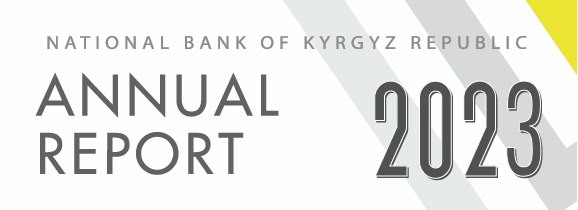Major Trends in Deposits and Credits Market
(2007)
In 2007, the banking system saw the growth of deposit base and the credit portfolio of operating commercial banks. The growth of deposits and credits was registered almost throughout the reporting period; only in October in November the balances of deposits and credits were observed going somewhat down. Meanwhile, their growth was considerably higher than in 2006. Over the reporting year, the credit portfolio of the banking system increased by 83.7%, and the deposit base increased by 39.5% (without regard of Ayilbank, the credits grew by 64.3%, and the deposits increased by 32.0%). As a result of the advanced growth of credits payable in the banking system the ratio of credits to deposits increased by 21.4 percentage points compared to the beginning of the year, up to 88.9% as of the year-end (Diagram 1).
In the late December 2006, the banking system was joined by OJSC Ayil Bank reorganized from KAFC and mostly specializing on the long-term credits to agriculture. This facilitated essential improvement of figures and quality of the deposits and credits market.
In 2007, the growing activity of commercial banks in issuing credits and attracting deposits was accompanied by the growth in their maturity. For instance, the share of long-term credits in the time structure of the credit portfolio grew up to 67.4%, and the maturity of credits as of the year-end increased by 3.6 months up to 25.2 months. The maturity of the deposit base increased by 4.1 months, up to 6.6 months in 2007. In the area of time deposits this figure grew up from 11.4 to 16.9 months (Diagram 2).
The concentration index of credits payable remained unchanged over the reporting period, and as of the end of December it amounted to 0.09 (Diagram 3), which was equivalent to the market presence of 11 participants with equal shares and indicated low concentration in the credits market. The concentration index of deposit base reduced by 0.02 pp to make the same 0.09 as of the end of the reporting period.
In 2007, the weighted average rate of credits payable issued by operating commercial banks in national currency decreased by 3.1 pp, and the rate for credits issued in foreign currency remained unchanged. The weighted average rate of deposit balances in national currency increased by 1.0 pp and amounted to 4.7%, and the rate of deposit balances in foreign currency increased by 0.7pp and amounted to 2.2%. As a result, the spread between the rates in deposit and credit operations of commercial banks in national currency decreased by 4.1 pp, down to 16.7%, and the spread between the rates in deposits and credits in foreign currency reduced by 0.6 pp, down to 15.9% (Diagram 4).
The volume of new credits in 2007 amounted to 24.5 billion soms, having increased by 51.1% compared to 2006. An increase of crediting volumes was registered in almost all industries of economy. A faster growth in the volume of issued credits was registered in the first half-year, then the crediting volume decreased from July to October, and grew up again in November and December. The volume of deposits attracted to the banking system amounted to 73.6% in 2007, having reduced by 2.7% compared to the last year due to the reduction in the flow of demand deposits in foreign currency in one of the commercial banks. Nevertheless, a favorable growth trend was formed for the new deposits from the start of the year, and this trend continued until August. There was a reduction of attracted deposits volume in September and November, however, in December, the deposits flow increased again (Diagram 5).
In the period from January to September, the average rate for new credits issued in national currency decreased by 2.4 pp and amounted to 23.2%. The decrease in the rate of new credits was observed in practically all real sector industries; however, a decrease in credits to the agriculture, retail and commercial bargains, as well as changes in the industry structure of credits had a greatest impact on the reduction of the average interest rate. The rate for new credits in foreign currency amounted to 18.5% on average for the period, having increased by 1.2 pp under the influence of changes in the structure of credit flow, and the growth of rates for credits in ‘other credits’ category as well as credits to industrial production and construction.
The average interest rate for attracted deposits in national currency increased by 0.3 pp over the reporting period, up to 2.2%. The rate for time deposits in national currency amounted to 6.9% over the period under review, having decreased by 0.4 pp mostly due to the decrease in the interest rates for almost all types of deposits. The interest rate for deposits in foreign currency grew by 0.5 pp compared to 2006, and amounted to 0.9% on average, mostly due to an increase in the share of time deposit flow. The rate for time deposits changed insignificantly, from 5.2% to 5.4% over the year, despite the high volatility.
The general situation in the deposits and credits market in 2007 included the following favorable trends:
· growth of the deposit base and credit portfolio in majority of operating commercial banks continued over the year;
· level of dollarization significantly decreased for the deposit base and credit portfolio;
· growth trend continued for the long-term crediting;
· deposit base concentration decreased;
· quality of banks’ credit portfolio improved;
· share of individuals’ deposits increased in the total volume of the deposit base;
· volume of new credits notably increased compared to 2006;
· rate of credit portfolio in national currency decreased;
· spread reduced between the rates of deposits and credits;
Meanwhile, some unfavorable trends were also observed:
· interest rate for new credits in foreign currency went up;
· concentration of credit portfolio remained high in some banks and industries.

















